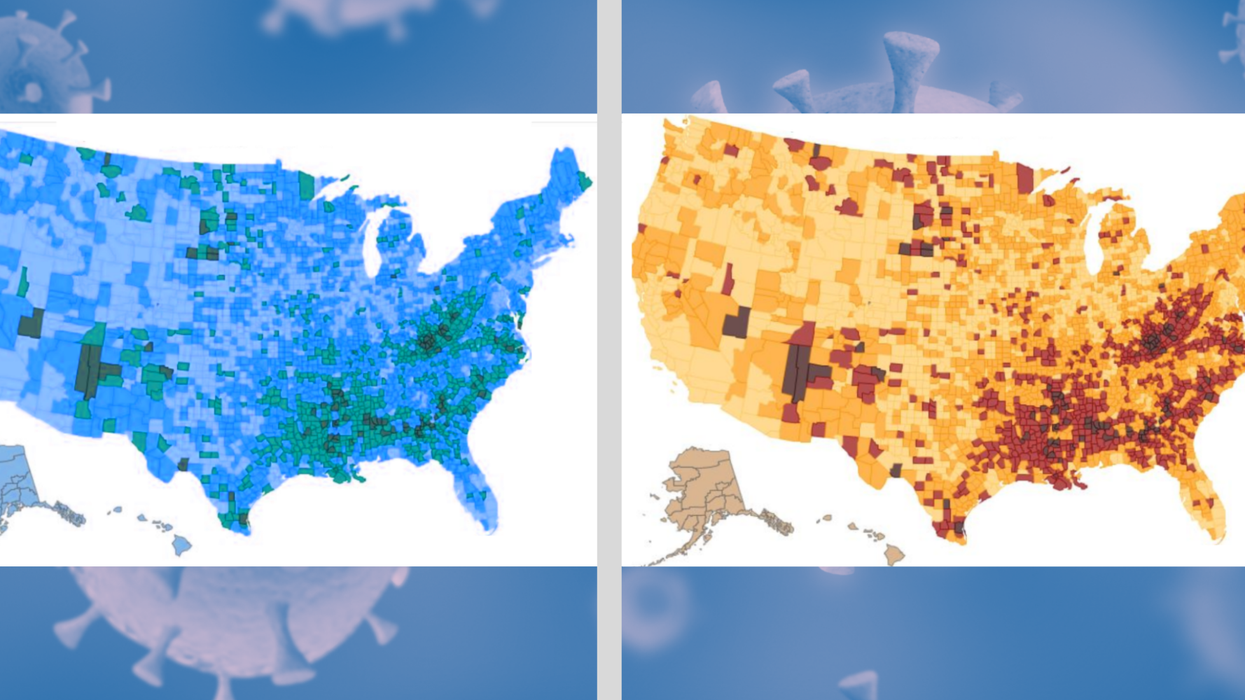Moya Lothian-McLean
Apr 08, 2020

Department of Agriculture
Data can often be our best friend when it comes to telling a story.
For instance, if someone wanted to work out if there were any interesting patterns behind which neighbourhoods in New York were most likely to report on their neighbours for violating social distancing rules, they’d turn to data.
And that data could reveal a link like a positive correlation between the volume of calls and the average wealth of an area in the city.
But data doesn’t always tell the whole story.
Which is what journalist Sarah Kendzior has just demonstrated with a Twitter post, comparing two maps related to measures taken to stop coronavirus spread.
The first is a map taken from a recent New York Times article titled “Where America Didn’t Stay Home Even as the Virus Spread”.
It shows the areas where people stopped travelling more as social distancing was urged, using the dates when the average distance travelled dropped below two miles.
The map seems to suggest that people in many southern states, like Alabama and South Carolina, aren't following social distancing guidelines.
The average distance travelled still exceeded two miles even by 26 March, which was the day when the USA announced it had the most confirmed cases of coronavirus in the world.
Of course, people interpreted this data to mean that many living in the south were just not clocking how serious the pandemic is.
It got pretty insulting.
But then a range of people, including Sarah Kendizor, chimed in to say that the map might not tell the whole story.
Kendzior compared the graphic to a map from the Department of Agriculture, which displays the areas in the US that have no supermarkets within a mile and would have to take public transport or borrow a car to get to the nearest one. These areas are often called “food deserts”.
And looking at the two maps, the areas where people are travelling more than two miles match up pretty evenly with the areas that don’t have easy access to a supermarket.
In case that still doesn’t make sense, Kendzior spelled out what she was observing.
People are driving to get food and supplies and the stores are more than two miles away from where they live.
Fellow journalist Olivia Paschal backed up her conclusions.
She says much of the South is rural and just doesn't have access to “essential goods and services” in the same way as cities do.
Paschal also attributed some of the behaviour to “slow information spread”, caused by a lack of internet for many in the south.
However, others have come up with different explanations. Writer Megan Mayhew Bergman suggested that “post-fact governance” (ie fake news) was preventing people from realising the reality of the situation and taking appropriate action
It just goes to show that people are fascinating creatures and there's loads of complex explanations for our behaviour.
Top 100
The Conversation (0)













Italian Prime Minister can't get away from Trump quick enough